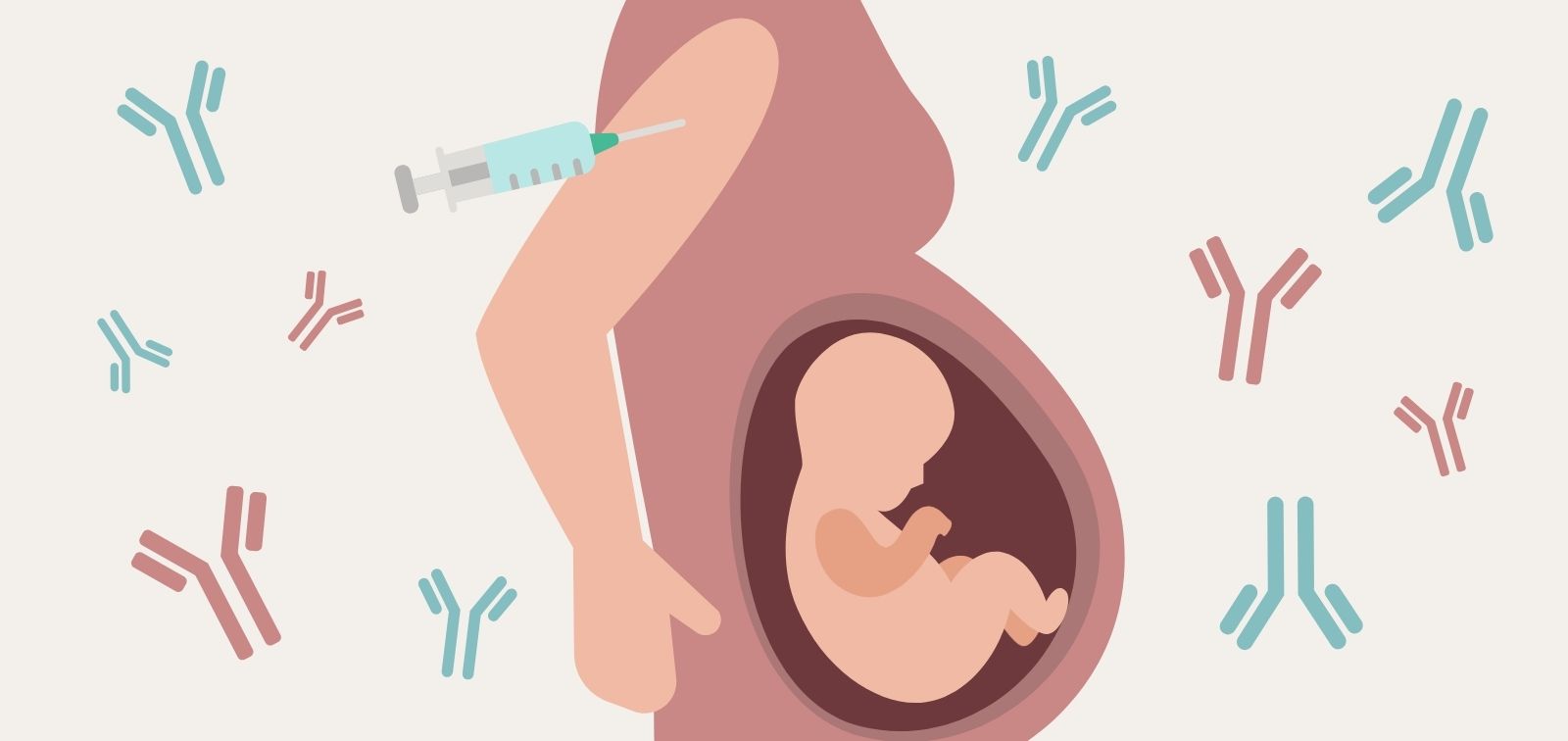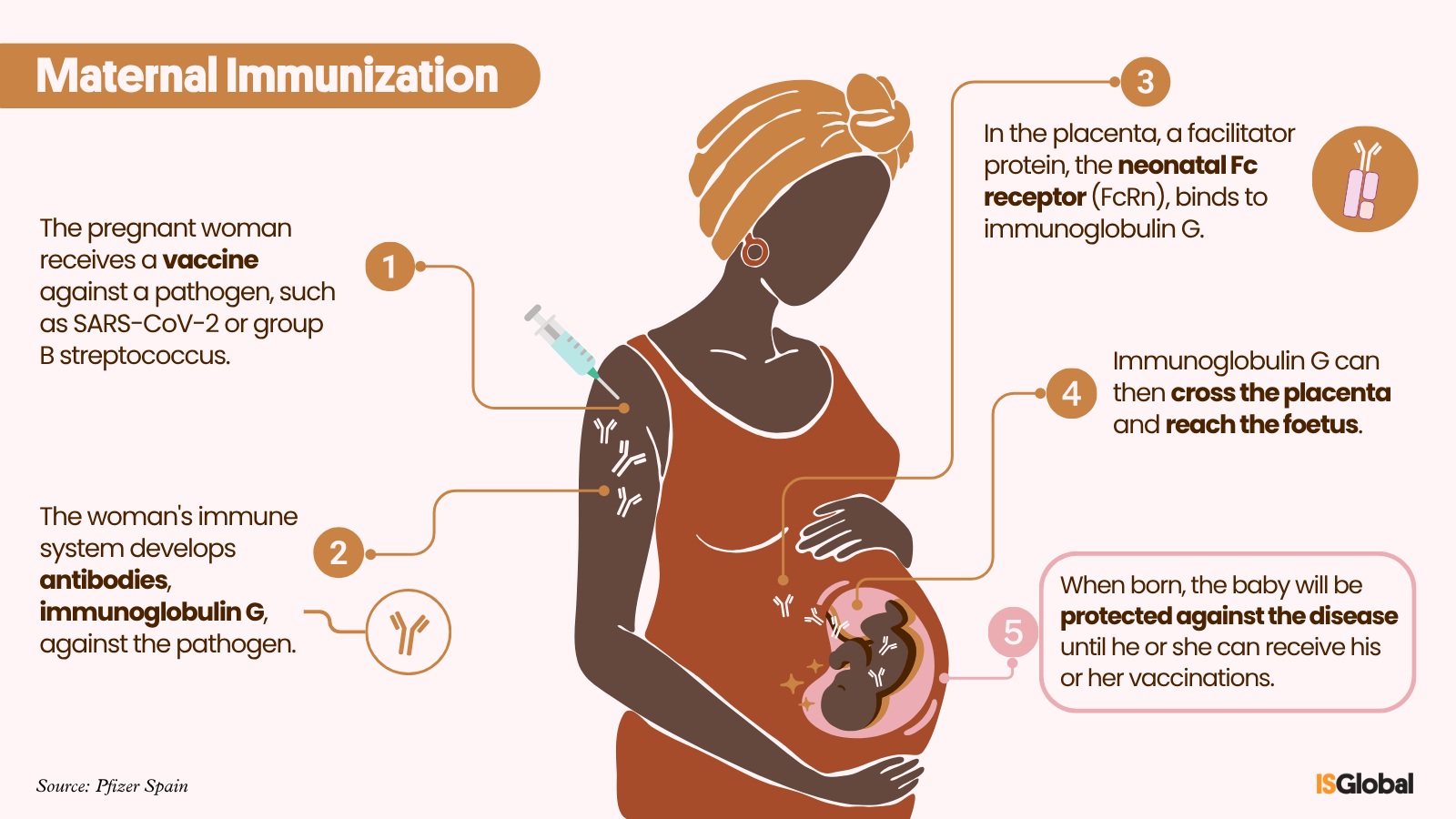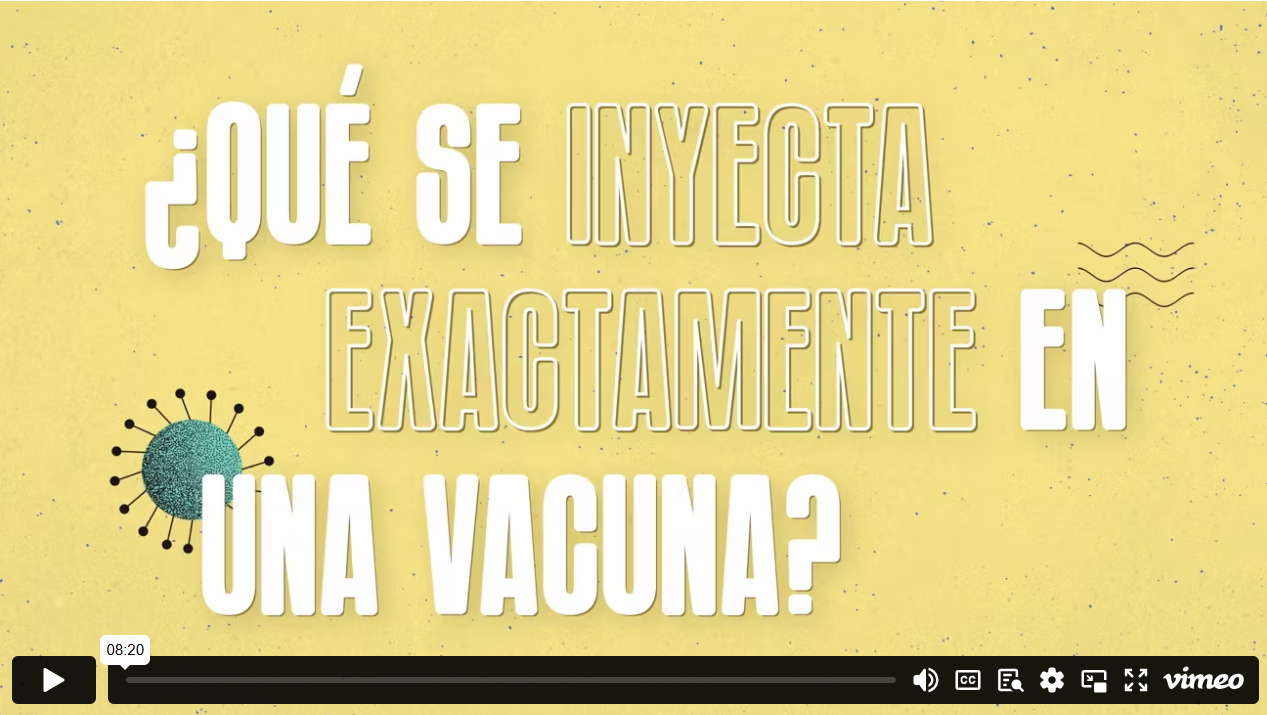Maternal immunisation

What is maternal immunisation?
Maternal immunisation is a preventative strategy involving the vaccination of pregnant women to protect both the mother and the baby against infectious diseases.
During pregnancy, maternal antibodies or immunoglobulins are actively transferred to the fetus via the placenta, providing passive immunity that protects the newborn during the first months of life, when their immune system is still developing and unable to respond effectively to vaccines.
In order to pass on protective immunity to the baby, a pregnant woman must have developed specific antibodies, either through previous exposure to an infection or via vaccination. However, in some cases, the transferred antibody levels are insufficient for effective protection. For this reason, vaccination during pregnancy enhances the maternal immune response, ensuring optimal levels of antibodies and greater protection for the baby in the first few months of life against preventable diseases.
“Vaccines are among the most effective preventive tools available today for reducing infectious diseases and their complications. Maternal immunisation is recognised as a safe and effective strategy to protect both pregnant women and their babies from diseases that still cause significant illness and death.”
Azucena Bardají (Blog Health ISGlobal [Updated, 2025])
How are antibodies transferred?
From the second trimester of pregnancy, the mother transfers antibodies to the baby via the placenta. These are known as immunoglobulin G or IgG. As pregnancy progresses, the transfer of immune protection increases significantly.
When a pregnant woman receives a vaccine:
- Her immune system responds by producing antibodies against the disease. These antibodies (immunoglobulin G) are the only ones able to cross the placenta in significant quantities, especially during the third trimester of pregnancy.
- With the help of a carrier protein (known as the neonatal Fc receptor or FcRn, found in the placenta), immunoglobulin G is able to cross into the fetal bloodstream, protecting the baby during their first months of life.
- At birth, the baby already has passive immunity thanks to maternal antibodies, which offer temporary protection until they can receive their own vaccines.

The role of breastfeeding
Breastfeeding provides an additional form of protection. After birth, antibodies can also be passed to the baby through breast milk.
These include immunoglobulin G (IgG), as well as IgA and IgM, which help the baby to fight off digestive, respiratory and bloodstream infections. Furthermore, some studies have shown the presence of disease-specific IgA in the breast milk of women who where vaccinated during pregnancy, for example with the Tdap vaccine1 (which protects against tetanus, diphtheria and pertussis), the SARS-CoV-2 vaccine2 or the flu vaccine.
1 Munoz, F. M., Bond, N. H., Maccato, M., Pinell, P., Hammill, H. A., Swamy, G. K., Walter, E. B., Jackson, L. A., Englund, J. A., Edwards, M. S., Healy, C. M., Petrie, C. R., Ferreira, J., Goll, J. B., & Baker, C. J. (2014). Safety and immunogenicity of tetanus diphtheria and acellular pertussis (Tdap) immunization during pregnancy in mothers and infants: a randomized clinical trial. JAMA: The Journal of the American Medical Association, 311(17), 1760–1769. https://doi.org/10.1001/jama.2014.3633
2 Pace, R. M., Williams, J. E., & Järvinen, K. M. (2021). Characterization of SARS-CoV-2 RNA, antibodies, and neutralizing capacity in milk produced by women with COVID-19. mBio. 12, 1–11. https://doi.org/10.1128/mBio.03192-20
READ MORE
COLLAPSE
- PROTECT Paves the Way for Future Maternal Vaccination against Group B Streptococcus in Africa(ISGlobal, 2024)
- RESPIRE Project Completes Recruitment of Pregnant Women Participants(ISGlobal, 2022)
- ISGlobal Contributes to the New Roadmap for Maternal Immunisation against Respiratory Syncytial Virus(ISGlobal, 2019)
- Maternal Immunization: Protecting Mothers and Infants in Early Life(ISGlobal, 2015)
- Maternal immunization | Saad B. Omer(The New England Journal of Medicine, 2017)
MULTIMEDIA MATERIAL

